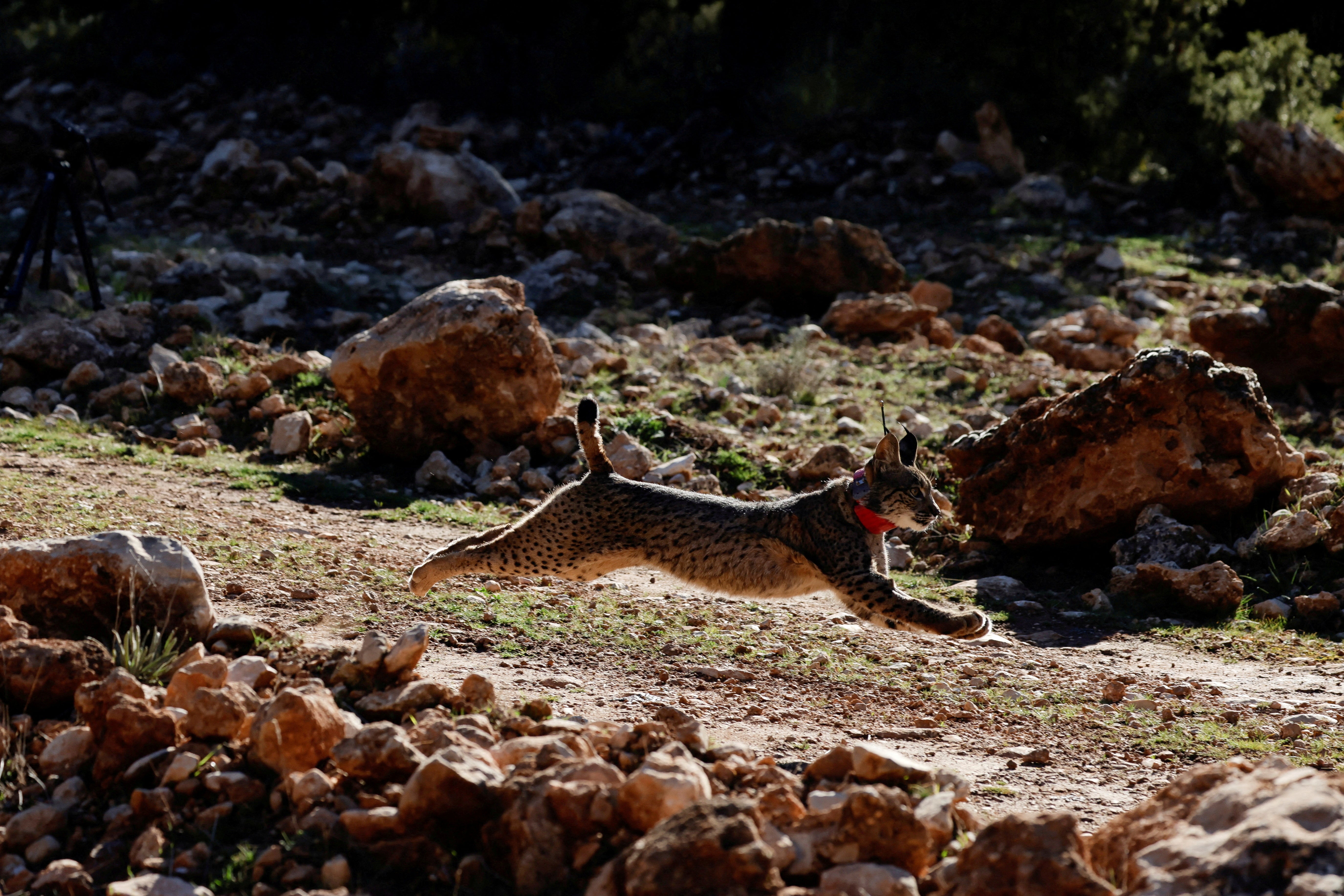Iberian Lynx rebounds from the brink of extinction
The number of Iberian Lynxes has increased by nearly 2,000 since 2002, according to the latest census

The Iberian Lynx has returned from near extinction with the population having recovered enough for the International Union for Conservation of Nature (IUCN) to downgrade the wild cat from “endangered” to “vulnerable” on the global red list of threatened species.
Following more than two decades of conservation, populations of the species, a medium-sized wild cat smaller than its North American relatives, have increased dramatically since 2002, rising from just 94 animals to 2,021 as of last year.
The overwhelming majority , around 86 per cent, have been found in Spain, though considerable numbers have also been located in neighbouring Portugal.
The increase is the result of a two-decade-long effort from a coalition of partners including the European Union and regional and national governments in Spain and Portugal, as well as wildlife NGOs and local people, and culminated in the IUCN declaring a change in status for the animal on Thursday.
Francisco Javier Salcedo Ortiz, Coordinator of the LIFE Lynx-Connect project, which led the conservation action for the Iberian lynx called it "the greatest recovery of a cat species ever achieved through conservation" and praised a range of actors including landowners, farmers, hunters and the European Union which provided financial and logistical support.
The animal’s numbers plummeted during the last century as thousands were killed because of laws aimed at ridding creatures deemed to be vermin. Others died out because of disease-driven drops in the rabbit populations that make up 90 per cent of the lynx’s diet, and because of the destruction of the cat’s habitats.

Craig Hilton-Taylor, head of the red list unit at IUCN, praised the collaborative initiatives to expand and diversity lynx numbers and populations across different areas, to build up rabbit numbers and raise awareness.
“Over the next 100 years, we can probably get to the lynx being fully recovered in its native range,” he said.
“Climate change is the worrying factor because we don’t know what it’s going to do – we’ve seen an increase in fires in the Mediterranean area, so how that’s going to impact on the lynx is yet to be determined.
“So this is a huge success but there’s a long way to go to get the species back to where it should be.”
Ramon Perez de Ayala, a lynx expert at the World Wide Fund for Nature (WWF) Spain, said the conservative effort was reaching the “halfway” point.
“We’re about halfway down the path we’ve set ourselves,” he said. “We wanted there to be 750 females of reproductive age by 2040 and now there are 406.
“There’s still much to be done. And even when it’s all done, we’ll need to carry on working so that this doesn’t all happen again.”
The IUCN is set to produce its broader Red List update which serves as a barometer of biodiversity next week.
Reuters and Associated Press contributed to this report

Join our commenting forum
Join thought-provoking conversations, follow other Independent readers and see their replies
Comments